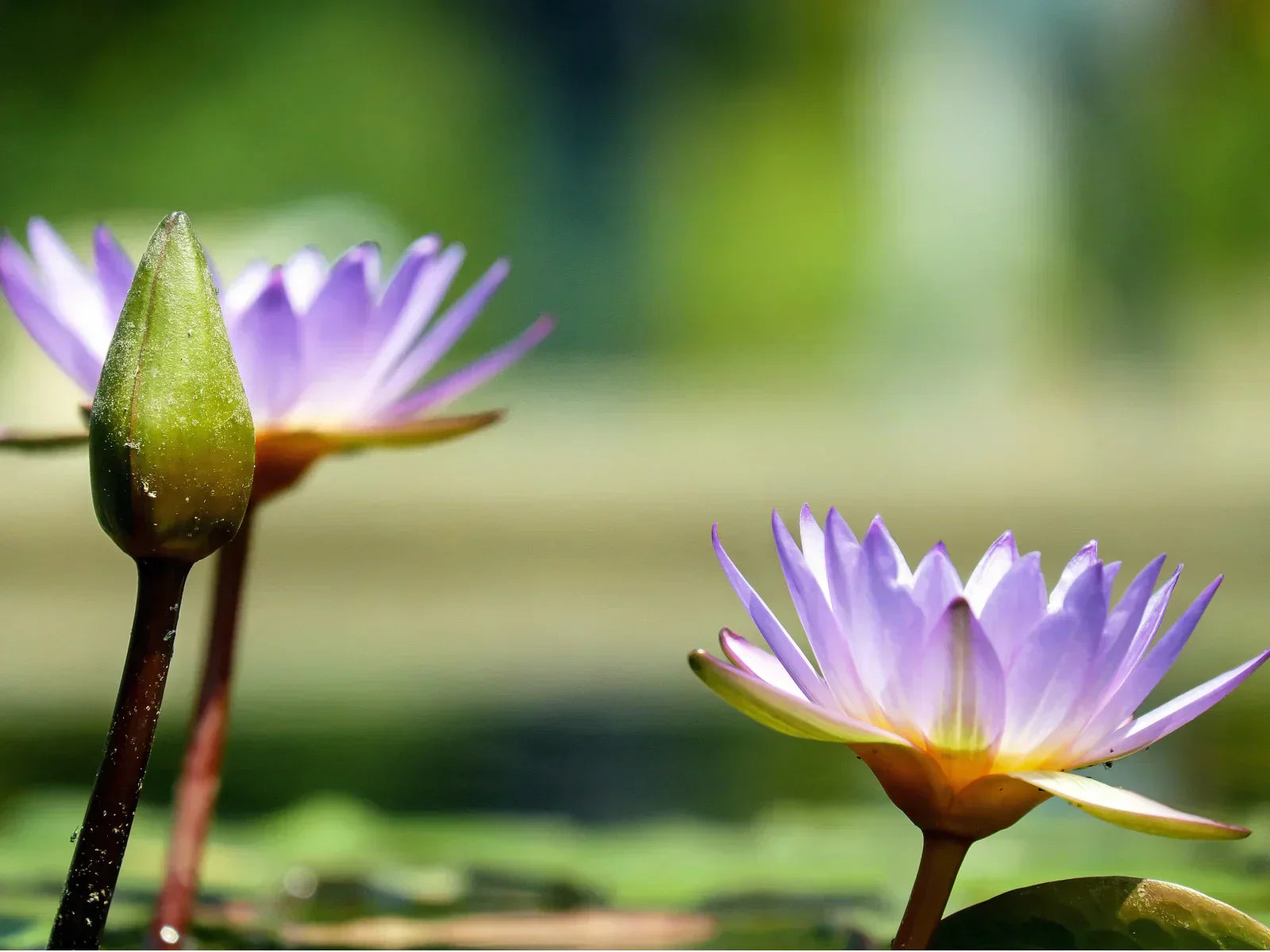Blue Lotus: The Ancient Flower with a Mystical Twist
January 25, 2025 – Team MindFuel

Meet Blue Lotus: The Ancient Flower with a Mystical Twist
Blue Lotus, scientifically known as Nymphaea caerulea, is a mesmerizing aquatic flower that has enchanted civilizations for centuries. With its striking blue petals and rich history, this legendary bloom isn’t just a pretty face; it’s also packed with potential benefits! From relaxation to cognitive enhancement, Blue Lotus has been used in everything from sacred rituals to evening wind-downs.
Looking to experience Blue Lotus for yourself? Shop now and explore our selection!
What Does Blue Lotus Look Like?
Imagine a serene pond with elegant blue flowers rising above the water; those are Blue Lotus blossoms! A member of the water lily family (Nymphaeaceae), this perennial aquatic plant thrives in still waters like lakes and ponds. Its vibrant sky-blue petals unfold beautifully, revealing a golden center, while its lily-like green leaves add to its dreamy aesthetic.
A Brief History of Blue Lotus: From Pharaohs to the Present
The story of Blue Lotus spans thousands of years and multiple cultures:
-
Ancient Egypt: Used in religious ceremonies, artwork, and even as a symbol of rebirth and enlightenment, Blue Lotus was a sacred plant to the Egyptians. Some believe it was also infused into wine for relaxation and altered states of consciousness.
-
Greek & Roman Times: The flower was prized for its calming and euphoric effects, often used in social gatherings and rituals.
-
Mayan Culture: Blue Lotus also found its way to Central America, where indigenous peoples explored its spiritual and medicinal potential.
-
Modern Day: Today, Blue Lotus is making a comeback in wellness circles as a natural way to enhance mood, promote relaxation, and reconnect with ancient traditions.
The Benefits of Blue Lotus
While research is still unfolding, traditional use and anecdotal reports highlight several exciting potential benefits:
-
Relaxation & Stress Relief – Feeling tense? Blue Lotus is known for its calming properties, making it a great natural stress-buster.
-
Mood Boosting & Euphoria – Many users report a mild, uplifting sense of happiness and peace.
-
Aphrodisiac Qualities – Historically linked to passion and desire, Blue Lotus has been used to enhance intimacy.
-
Sleep Support – Trouble winding down? Blue Lotus has been traditionally used as a natural sleep aid.
-
Cognitive Enhancement – Some claim it boosts mental clarity and focus, making it a gentle nootropic.
How to Use Blue Lotus
There are several fun and easy ways to enjoy Blue Lotus:
-
Tea – Steep dried Blue Lotus petals in hot water for a relaxing herbal infusion.
-
Smoke or Vaporize – Some prefer to smoke or vape the dried petals for a more immediate effect.
-
Tinctures & Extracts – Concentrated liquid forms allow for precise dosing and convenience.
-
Bath Rituals – Add Blue Lotus petals to a warm bath for a luxurious and calming soak.
Final Thoughts: Is Blue Lotus for You?
Whether you’re looking to unwind after a long day, enhance your meditation practice, or simply enjoy a beautiful and historic botanical, Blue Lotus is a fantastic choice. Its rich history and intriguing benefits make it a standout in the world of herbal wellness. As always, if you’re new to Blue Lotus, start with a small dose and see how it works for you!
Ready to try Blue Lotus? Shop now and bring this ancient flower into your wellness routine!
Disclaimer: This article is for informational purposes only. Always consult a healthcare professional before trying new herbal supplements.


0 comments